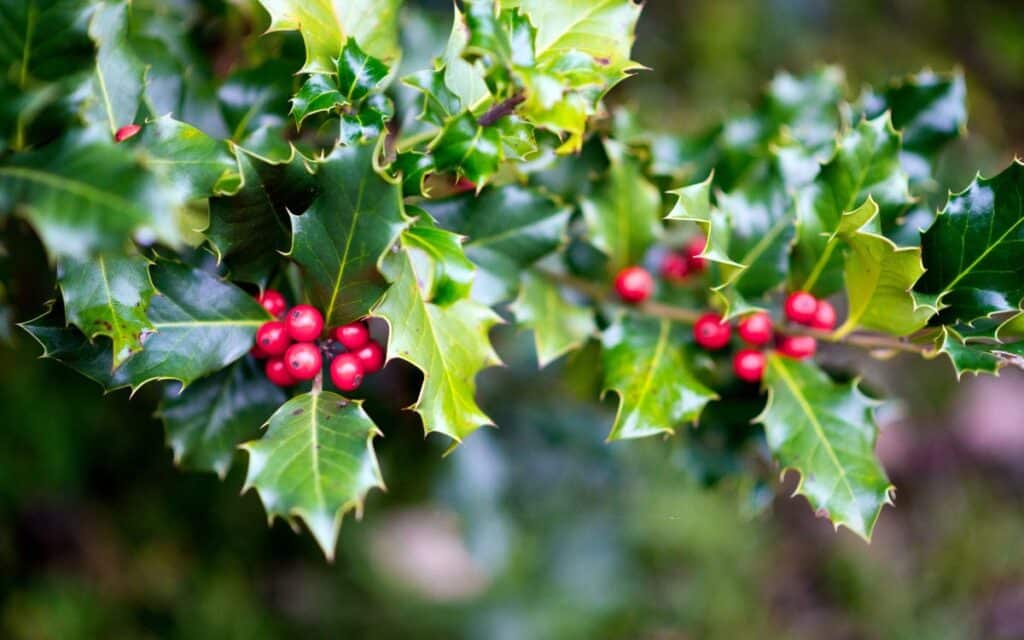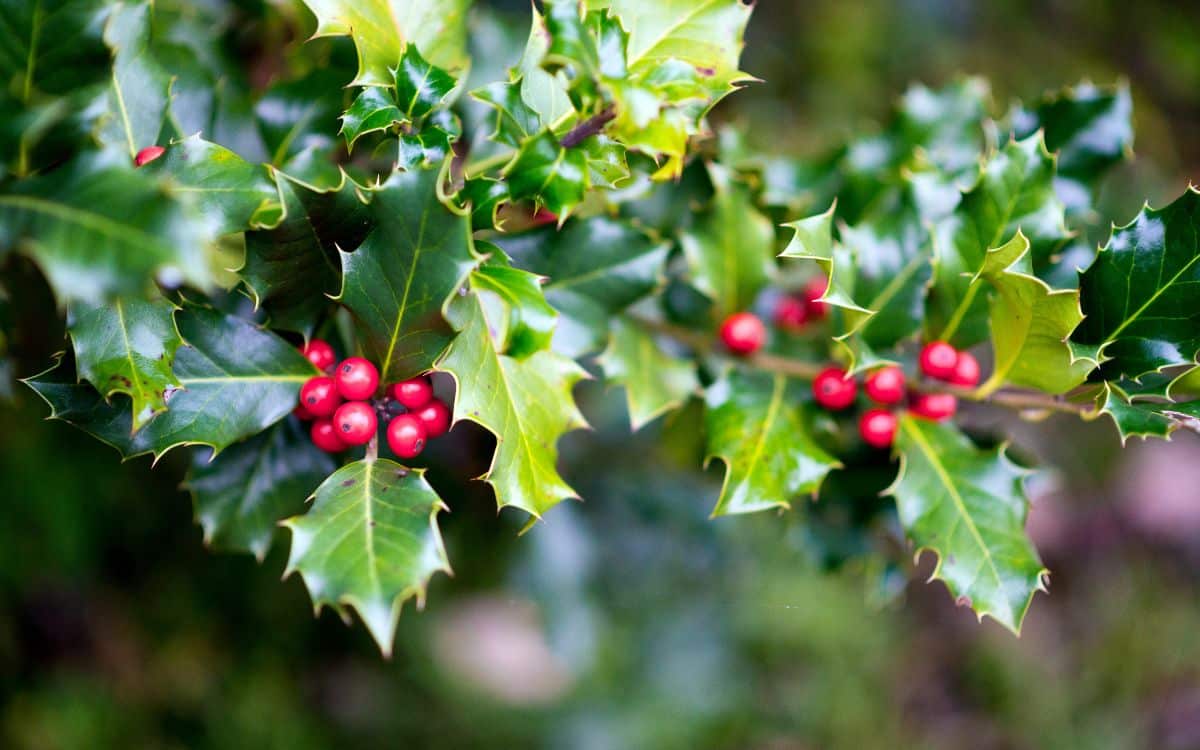Holly is the ultimate festive foliage. But there’s more to the bush than just Christmas cheer, writes HELEN J.R. BRUCE

The holly tree captures our imagination during the cold months around the winter solstice. We see it on Christmas cards, made into wreaths and glimmering evergreen in the bare forest. For many modern pagans, it’s dark green leaves symbolise the Holly King, who symbolically rules over the darker half of the year, before offering his crown to the Oak King in spring.
For some, holly forms one of the many faces of the Green Man. Others associate it with Gwyn ap Nudd, who leads the Wild Hunt at Samhain and enacts a yearly battle with his flame haired counterpart, Gwythyr ap Greidawl, in a pattern that echoes the cycle of the Holly and Oak Kings.
Protective Properties of Holly
The wood from holly trees is believed to have a number of protective properties. It is said to guard against lighting strikes and ward off evil spirits. If turned or carved, it can produce beautiful pale wood bowls and implements, plus other striking objects which make use of the patterned, spalted wood.
Holly symbolises sacrifice and reincarnation, due to its evergreen nature. The red berries are sometimes described as symbolic of the life-giving blood of the mother Goddess, although the tree itself is masculine. Deities linked to holly include the Norse god Thor, unsurprisingly given the fact that holly is said to protect a person or dwelling from lightning strikes! In folk cures, hot compresses made from the bark and leaves were used to help ease the pain of broken bones.
Holly Symbolism in the Home
Hanging holly over the front door of a home is thought to offer protection from witches and evil spirits, as well as inviting fertility into the household. Cutting down a holly tree was believed to be unlucky, although taking branches from the forest to decorate houses was (and still is) a popular tradition. The first leaves of holly to enter the home, depending on whether they were smooth or prickly, would dictate whether the wife or husband would rule the household in the year ahead.
Christianity adopted the pre-existing pagan beliefs around holly and the sharp leaves became symbolic of Christ’s crown of thorns. The red berries are seen by many Christians as a symbol of the blood Christ spilt on the cross and the evergreen nature of the tree is interpreted as symbolic of life after death.
Folklore of Holly
Traditionally, farmers often used distinctive evergreen holly trees to establish lines of sight when ploughing fields during the winter. Sometimes holly bushes growing in hedges were left, while the rest of the hedge was cut, as the spiky holly was believed to obstruct witches who liked to travel by running along the top of hedgerows. What’s more, holly wood was believed to exude a power to control horses, and most whips for horse drawn coaches were made from coppiced branches for this reason.
Holly trees have the ability to grow cruelly spiked leaves in response to being eaten by animals. This is facilitated through epigenetics, and the spiked leaves retain the same DNA code as the original smooth leaves, except for a chemical addition which alters how the DNA is read, leading to the fierce spines. The highest branches on holly trees often continue to grow smooth leaves, while the lower boughs produce the well-known spiky leaves.
This beautiful native UK tree has a long history of human use and reverence, be it decorating homes, churches, or as part of Yule festivities.
As well as having potent symbolism, the blood red berries provide a vital winter food source for birds and small mammals. Deer also rely on browsing the smooth leaves higher up the tree during the months that other trees are bare and grazing is scarce.
When we deck our halls with holly, and its companion ivy, we are enacting a festive tradition passed down through many generations and embraced by numerous systems of belief.







